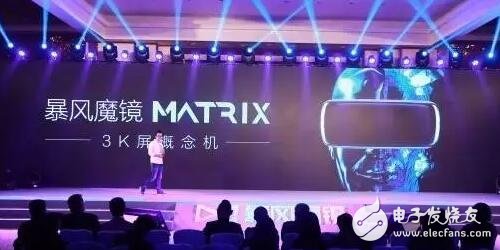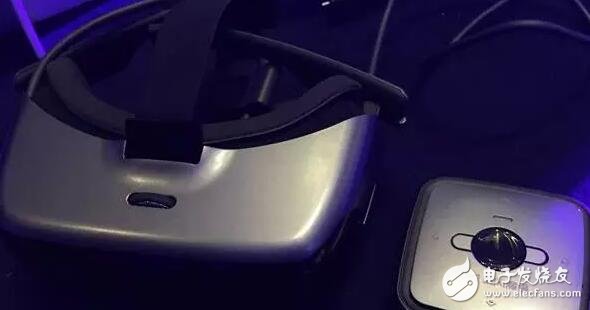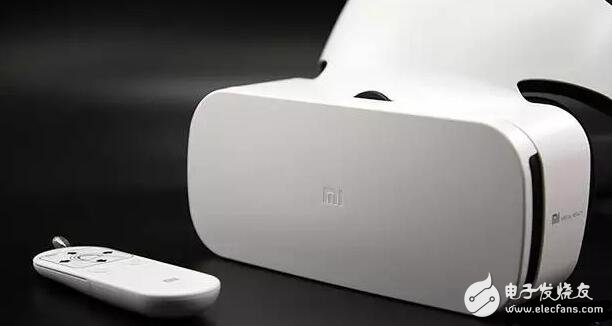Recently, according to the GFK survey, the overall sales of VR hardware in China reached 650 million yuan in 2016, more than three times the 2015 revenue of 150 million yuan, with an average monthly sales capacity of 382 units and a brand number of 480. Chinese consumers have higher acceptance of VR than most countries such as the United States and Japan, and the current potential users have reached 286 million. Among them, VR mobile helmet / head display has obvious portability, price and close to the people, so it has become the first product of VR retail explosion. In the past six months, the average monthly sales can reach tens of millions of yuan, including Storm, Huawei, Domestic brands such as Xiaomi are the main force.
Storm Mirror
On December 20th, Storm Mirror held a grand conference in Beijing with the theme of “VR Evolving | Virtual Reality • Evolutionâ€. At the meeting, a new mobile VR helmet “Storm Mirror S1†and VR machine “Storm†were released. The two major products of Magic Mirror have made breakthroughs in the three major obstacles to the popularity of VR, such as clarity, head weight, and dizziness, which have effectively promoted the evolution of the virtual reality industry.

The appearance of the Storm Mirror S1 is light and stylish, with a weight of 220g. It adopts Fresnel lens and supports the adaptive distance, which can effectively reduce the screen window effect and bring better viewing effect. The price is 199 yuan, and it will be on sale on December 21. The Storm Mirror Matrix weighs only 230 grams and is known as the world's lightest mobile VR head-mounted display. An important reason for its significant improvement in thin and light is that it uses a split design. The design concept is to put the CPU and storage unit. The battery and the like are independently made into independent hosts, and only the display unit is retained in the head display, which can also reduce the interference caused by heat dissipation and noise in the head. The Matrix uses two 1440*1440 resolution screens with a PPI of 705 and a refresh rate of 90HZ, which is the best in terms of clarity. At the same time, the angular resolution is also higher, the delay is 17ms, equipped with 820 processor, and 3D surround sound, battery capacity 5000mA, running the latest Magic UI2.0, can be freely interacted through the handle, and has an open platform and massive content support. . It is worth mentioning that the price of the Storm Mirror Matrix is ​​only 2,499 yuan, which is extremely cost-effective compared with the price of the same-level VR products on the market at nearly 4,000 yuan.

Millet VR glasses
Xiaomi VR glasses opened for sale on December 12, the price is 199 yuan. The integrated headband design, soft island velvet fabric, the overall appearance is modern and simple. The glasses are equipped with a distance sensor that supports up to 600 degrees of myopia and 200 degrees of farsightedness. Equipped with an independent motion sensor and a 9-axis somatosensory handle, the sensitivity is 16 times higher than the toy version, and the delay is only 16ms. System version of the Xiaomi VR glasses official version uses MIUI VR system, using a new desktop design, the content has been adapted to more than 500 panoramic video, 30 VR applications, and more than 200 developers have signed up. Support for the adaptation of Xiaomi 5/5s/5s Plus/Note 2 four flagship phones. In addition, the public micro-signal of Xiaomi official website recently announced the content resources of the first batch of Xiaomi VR glasses. In addition to video platforms such as Youku VR and iQiyi VR, it also includes 9 VR game content. It can be seen that although Xiaomi has entered the VR field a little late, the results are obvious to all.

Huawei VR glasses
The Huawei VR glasses that were unveiled at the press conference were first sold on December 15 for 599 yuan. Appearance Huawei VR glasses use a white appearance body design, T-shaped headband design, support 2K resolution and ultra-low latency, known as 360-degree visual sound field synchronization. Huawei VR's optical design is highly customized for specific screen sizes, so it is only compatible with three Mate 9 series phones. Previously, Google has confirmed that Mate 9 Pro is the first domestic mobile phone in China that meets the requirements of the Daydream platform. However, due to the failure of Daydream to enter China, Huawei VR will adopt its own software and hardware platform. The platform content includes 5000+ free movies, 500+ panoramic pictures, 200+ panoramic roaming, and 40+ free games. Although Huawei VR glasses are mobile VR products, they still have considerable adherence to the immersion experience. In addition to the leading level of visual FOD and MTP, the immersive experience of sound is unequivocal, and it is the only VR glasses product that provides independent stereo audio technology in mobile VR.

As the biggest hot spot this year, VR has already had many mature products. Nowadays, domestic VR manufacturers are stepping into and launching new products, which ensures that this emerging industry can take off.
Dash Cam For Audi,Audi Utr Dash Cam,Audi Universal Traffic Recorder,Audi Dash Cam
SHENZHEN ROSOTO TECHNOLOGY CO., LTD. , https://www.rdtkdashcam.com
